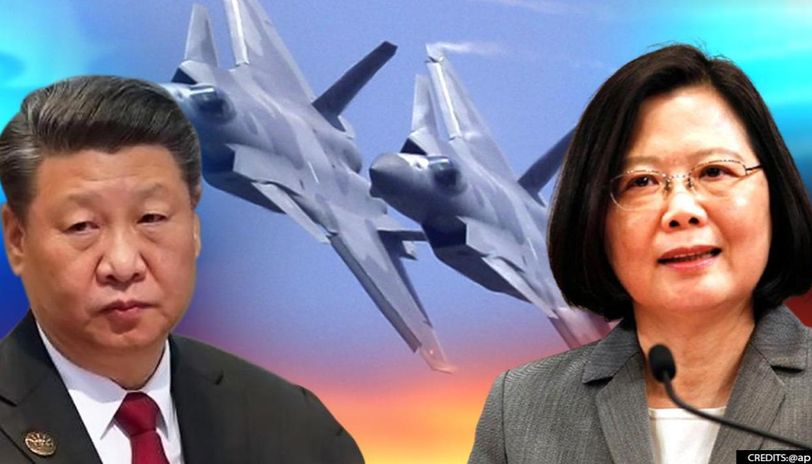
A man arrives to be inoculated with a Covid-19 vaccine at the Chaoyang Museum of Urban Planning in Beijing on January 15, 2021. (Photo by Noel Celis / AFP)
Reports about “fake” COVID-19 vaccines in China have been carried by Chinese media outlets and spread by people on Chinese social media as virus outbreaks continue to “worsen” in parts of the country.
According to the media reports, police in Beijing and the provinces of Jiangsu and Shandong rooted out a “crime ring” that was manufacturing and selling fake COVID-19 vaccines.
Chinese authorities said that the gang of more than 80 suspects was arrested on charges of producing and selling counterfeit vaccines. They had reportedly filled injectors with a “saline solution” which were to be sold as COVID-19 shots. Over 3,000 fake products were confiscated by authorities.
The official reports say the gang had begun its criminal activities in September 2020 and was selling the counterfeits at high prices. It also said that police had been able to identify the places where the counterfeits had been produced and sold.
Chinese citizens expressed their anger online over the exposed scandal.
“We had fake masks,” one netizen said in a post. “Now comes the fake vaccine. Is there anything that cannot be fake in China?”
Another said: “This isn’t manufacturing and selling fake products in an ordinary sense. This is killing.”
A netizen with a username “Lao Zhuang Sun Zi VV” commented this is “more wicked than drug trafficking.”
Another asked: “Isn’t inoculation done in licensed hospitals? How could fake vaccines enter the system? Really terrible.”
In fact, China had its vaccine administration law approved on June 29, 2019. The law went into effect on December 1 the same year. The new law came after multiple “vaccine safety scandals” in China.
In 2004, 6,000 non-qualifying vaccines were found by the Suqian Medical Products Administration of eastern China’s Jiangsu province to have caused injury to about 3,000 children.
In June 2005, the Center for Anti-Epidemic and Health Protection of Dazhuang town in Si county, Anhui province, conducted Hepatitis A vaccines on 25,000 elementary and secondary school students. However, 121 of them suffered adverse effects, including one death and 20 severe cases.
During 2007, there were also several cases of casualties among children administered vaccines in northern China’s Shanxi province. But local authorities strictly controlled any reporting on the health crisis until 2010, when reporter Wang Keqin published his findings in China Economic Times after interviewing 78 households with child victims who received sub-standard shots.
Wang’s coverage sparked nationwide indignation at and distrust in Chinese-made vaccines.
In 2009, “Jingang Andy Biological Products” illegally added nucleic acid material in its rabies vaccines, leading to a marked reduction in virus antigen content and nearly halving the vaccine’s efficacy.
In 2012, an illegal vaccine case worth over 100 million yuan (about $15.5 million) was brought to light by police in Weifang city, Shandong province, involving influenza, hepatitis B, rabies, and chickenpox vaccines.
On July 15, 2018, a local medical products administration of northeastern China’s Jilin province said in a notice that “Changsheng Bio-Technology” falsified production records. Later, the firm was found to have sold more than 250,000 substandard DPT vaccines—designed to protect babies against diphtheria, whooping cough, and tetanus—in Shandong province.
The firm was fined 3.4 million yuan (about $526,000) by a provincial regulator. The following year, it received a much heavier fine of 9.1 billion yuan (about $1.41 billion) for falsifying production data for its rabies vaccine.
The Changsheng Bio-Technology vaccine scandal led to the downfall of more than 80 officials, Chinese authorities said. The company’s chairwoman Gao Junfang and 14 other employees were placed under criminal detention as well.
So far, no details have come out regarding specific penalties against Gao and her staff.

Syringes of the potential COVID-19 vaccine CoronaVac on a table at Sinovac Biotech at a press conference in Beijing on Sept. 24, 2020. (Kevin Frayer/Getty Images)
Sinovacs inactivated vaccine candidate, called “CoronaVac”, is among a number of companies in the global race to control the coronavirus pandemic. The company is running Phase 3 human trials in four countries and ramping up production to 300 million doses per year at a new manufacturing facility south of Beijing.
A lack of domestic coronavirus cases in China has meant that companies developing vaccines have shifted their focus overseas to conduct trials to gather the volume of data necessary to win regulatory approvals. When China’s government launched an emergency use program in July to vaccinate groups of essential workers, Sinovacs chief executive says the company supplied tens of thousands of doses, even as trials are still underway.
About 90% of Sinovacs employees have chosen to receive injections of CoronaVac, which is one of eight Chinese vaccine candidates in human trials. The company is also seeking approval to begin clinical trials with teenagers and children as young as age 3.

Security personnel gather near the entrance of the Wuhan Institute of Virology during a visit by the World Health Organization team in Wuhan in China’s Hubei province, China. (Ng Han Guan/AP Photo)
Chinese Citizens Don’t Trust Homegrown COVID-19 Vaccines: ‘Let the Leaders Take It First’
WHO Team Visits Wuhan Lab at Center of Speculation
Forced vaccines, vaccine passports against human rights








